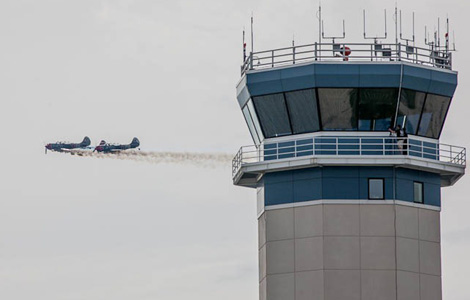On Those FAA Tower Closures
Bad news for air traffic controllers, but the traveling public and small aircraft pilots should see little impact
On March 22, an FAA press release announced the agency’s decision to close 149 control towers following the cutoff of funding more commonly known as “sequestration.” Outgoing transportation secretary Ray LaHood said the selection of towers for closing — all of them operating under contract — involved “tough decisions.” But in the aftermath of the announcement, there’s been little information about what effect the closings will have on flight operations.
Airports that have operating towers are designated as “controlled” fields. Those without towers are, simply, “uncontrolled fields.” Typically these are small rural airports, but they range in size from a single runway to former military bases with miles of paving.
FAA employees staff most airports that serve airlines and the traveling public, and those will remain open, although some may close at night when traffic tends to decline. The towers targeted for closing are staffed by non-federal controllers who work for private companies under contract to the FAA. In some cases, airports or local governments fund all or part of such a tower’s operation, and these towers too should be relatively unaffected.
How much of an effect will the closures have? Pilots of all stripes already follow established procedures for flying into uncontrolled fields. These procedures are spelled out in the Aeronautical Information Manual (formerly the Airman’s Information Manual) and are usually learned in the first few days of flight training, when the student pilot practices pattern flying and landings. If a tower is closed, inbound pilots would still tune in the tower frequency, transmit their position and intention to land, then follow that with continuing updates of position in the landing pattern; example: “States Air 43 is downwind for runway two-two, Metro Regional .”
At uncontrolled fields, pilots use a designated frequency — commonly called “Unicom” — to transmit advisories and monitor other nearby flights. An FAA spokesperson confirms that these established procedures will continue unchanged if the tower closures proceed with the first phase on April 7; the third and final phase is in May. Many airports are equipped with automatic weather monitoring and repeating transmissions that give pilots current conditions, and some also allow a pilot to illuminate the runway lights by keying the radio mike a set number of times.
Flight service facilities known as fixed base operators at some small airports voluntarily monitor Unicom and may even reply to incoming pilots with information about other aircraft known to be in the area. There are no plans to expand this service to actually control a field with a closed tower, however, probably due to questions about liability.
To sum up, the traveling public and operators of general aviation aircraft should notice little impact if the closures take effect. Pilots value the additional level of safety that tower controllers provide, but most will exercise additional caution and make good use of their radios.
